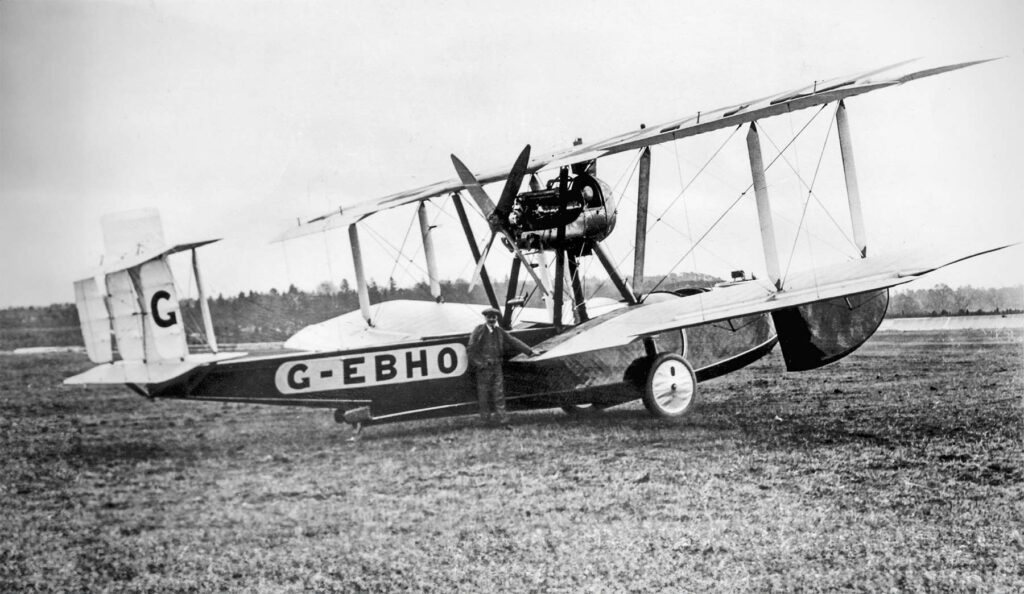“Vickers Viking IV: 1920s British biplane, amphibious versatility, for military and civilian roles. “This article explores the Vickers Viking IV, an amphibious aircraft from the early 1920s designed by Vickers Limited. It discusses the historical development, design features, performance metrics, military applications, and overall impact of the aircraft within its operational context.
The interwar period was a time of rapid evolution in aviation, with manufacturers exploring designs that could serve both military and civilian markets. The Vickers Viking IV was a product of this era, aimed at fulfilling a need for versatile aircraft that could operate from both land and water.
History of the development of the Vickers Viking IV:
After World War I, the British aviation industry faced a transition from wartime production to peacetime innovation. Vickers Limited, an established manufacturer of military equipment, shifted focus to take advantage of the burgeoning market for commercial and military aviation. The company had experience with amphibious aircraft during the war, and with the Viking IV, sought to build upon this expertise.
The Viking IV was envisioned as a multipurpose aircraft that could appeal to both military and civilian operators, capable of landing on water or ground. This amphibious ability was particularly appealing for operations in regions with extensive coastlines, lakes, and rivers, where infrastructure for land-based aircraft was sparse or nonexistent.
Vickers launched the Viking program in the early 1920s, under the guidance of Chief Designer Rex Pierson, who would later become famous for designing the Vickers Wellington bomber. The first Viking IV flew on 22 August 1922. It was tailored for a post-war market that anticipated a growth in air travel and required versatile aircraft to pioneer new routes and services.
Design of the Vickers Viking IV:
The Vickers Viking IV was a two-bay biplane, constructed primarily of wood with fabric covering. It featured a pusher configuration, where the propeller was mounted behind the engine, a design choice that improved forward visibility and prevented water spray on takeoff and landing from damaging the propeller or fuselage.
The aircraft had a wingspan of 46 feet (14 meters) and a length of 30 feet 6 inches (9.3 meters), with the upper wing slightly longer than the lower for improved lift. It accommodated up to four passengers in a closed cabin, with the pilot seated in an open cockpit behind. For amphibious operations, it was equipped with a single main hull and outrigger floats for stability on water.
One of the design’s main advantages was its flexibility. The Viking IV could access remote areas, negating the need for developed airstrips. However, the pusher configuration, while innovative, limited the aircraft’s speed and was less efficient than tractor designs where the propeller pulls the aircraft forward.

Performance of the Vickers Viking IV:
The Viking IV was powered by a Napier Lion engine, producing around 450 horsepower. This enabled a maximum speed of approximately 105 mph (169 km/h) and a cruising speed of 90 mph (145 km/h). The service ceiling was around 10,000 feet (3,048 meters), and it had a range of about 500 miles (805 kilometers).
In comparison to its contemporaries like the Fairey IIID, the Viking IV was slower due to its pusher configuration but offered greater versatility with its amphibious capabilities. The Napier Lion engine was a proven powerplant that provided reliable performance, though the Viking IV was not considered powerful when compared to dedicated military or racing aircraft of the era.
Military use and combat of the Vickers Viking IV:
The Viking IV’s military application was primarily for training and light transport roles. It was not armed and did not see combat. The British Royal Air Force utilized the aircraft for training pilots in navigation and reconnaissance, benefiting from its ability to land on both water and land.
There were no direct military conflicts involving the Viking IV, and it faced no competitive aircraft in a combat scenario. It was not widely exported, as the market for amphibious aircraft was niche. The aircraft was eventually superseded by more advanced designs and was phased out of service.
The Vickers Viking IV was emblematic of the innovation and versatility sought in the interwar period. It served as a testament to the adaptability required of aircraft designs in the face of changing market demands and technological advancements. While not a standout in terms of performance, the Viking IV’s amphibious capabilities represented a significant step in the evolution of multi-role aircraft.
Back to the Seaplanes section.